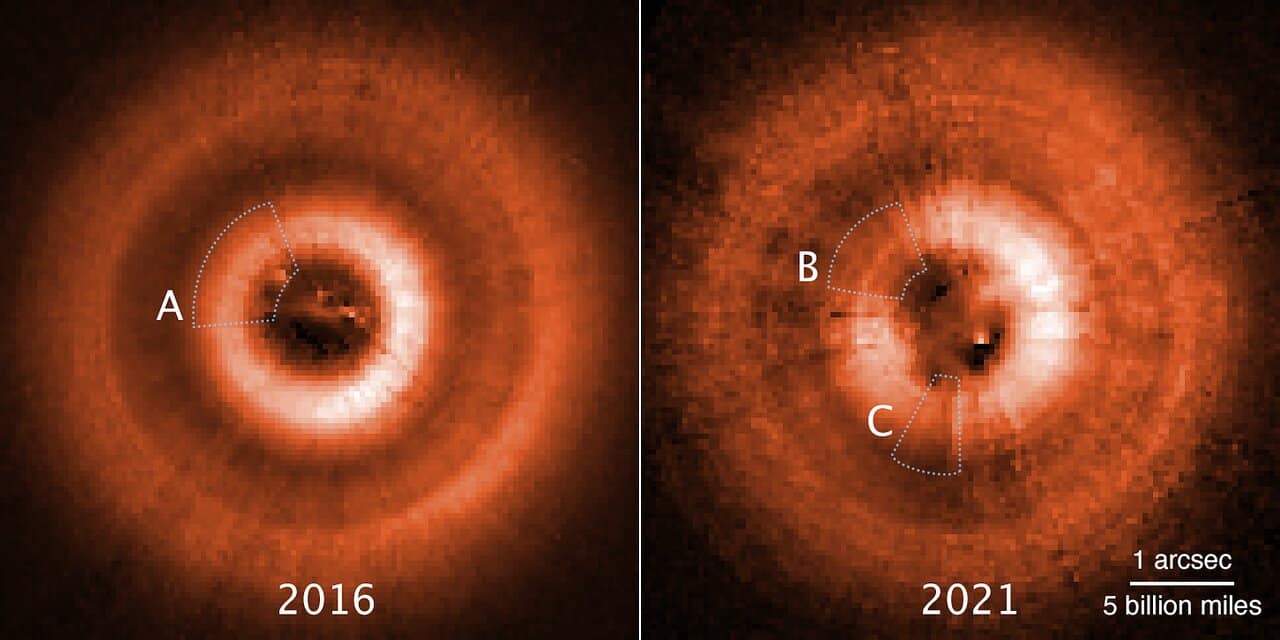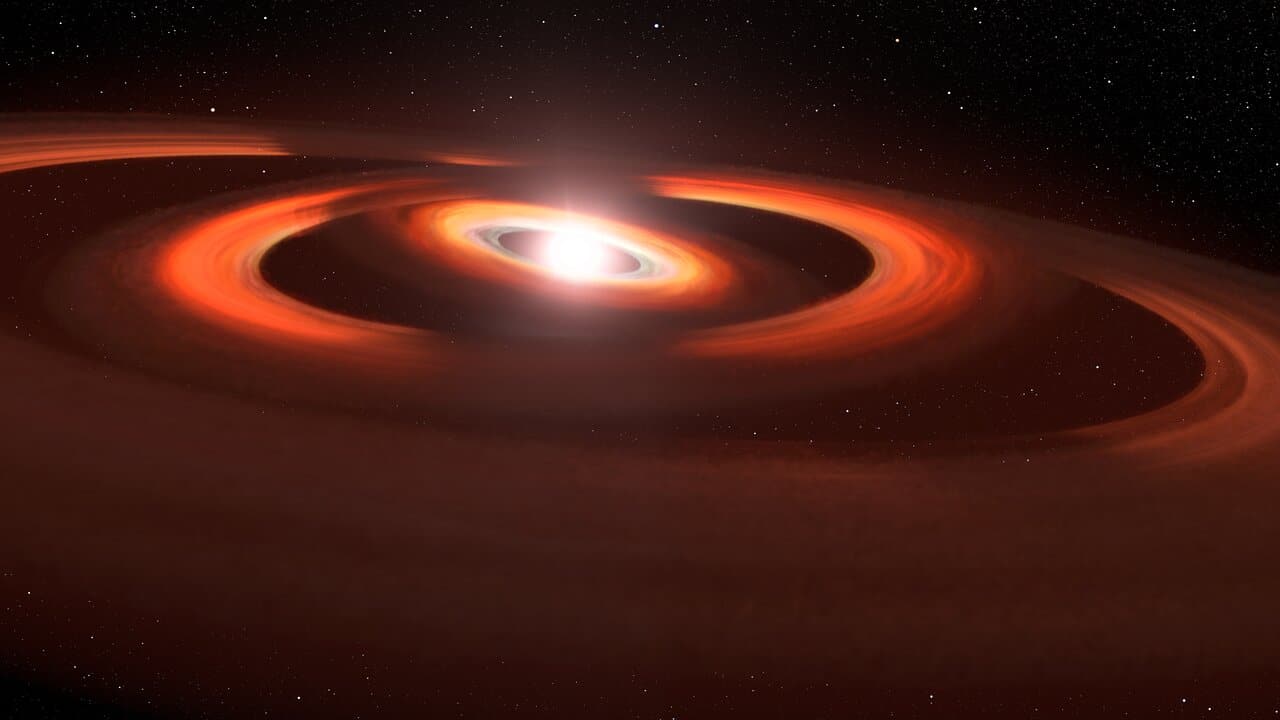The shadows, say the researchers, indicate that two new planets are forming in the system.
About 200 light-years from us is the very young star TW Hydrae. This nearby star is less than 10 million years old and has been on the radar of astronomers for several years. This is because TW Hydrae is known to harbor a so-called protoplanetary disk; a disc of gas and dust in which planets form. With the help of Hubble, researchers have now discovered two peculiar shadows moving across this massive disk. And it’s interesting. For these shadows may be the result of two planets seeing daylight into the system.
Shadows
Astronomers have already discovered the first shadow in 2017. It is not a planet that casts this shadow, but an inner ring. This inner ring is tilted slightly towards the much larger outer disk, blocking out starlight. Now, a second shadow has formed in just a few years, which has puzzled astronomers.

The second shadow was discovered in June 2021, part of a multi-year program designed to study shadows in debris disks around stars. The researchers then compared the latest observations of the TW Hydrae disk with Hubble observations from several years ago. “When I first looked at the data, I thought something was wrong,” said researcher John Debes. “I was stunned. We really racked our brains and it took us a long time to find an explanation.
Statement
The best explanation the researchers have found so far is that shadows are cast into the system by two misaligned rings, they write in The Astrophysical Journal. The shadows discovered likely come from slightly tilted inner rings that block starlight from reaching the outer disc and therefore cast a shadow. The fact that the second shadow was not seen in 2017 may have something to do with the close alignment of the two rings at the time. As a result, there seemed to be only one shadow. Over time, the rings separated, leaving two distinct shadows. The shadows revolve around the star at different speeds, like the hand of a clock. “We’ve never seen this on a protoplanetary disk,” Debes says. “It makes the system a lot more complex than we originally thought.”
planets
Researchers suspect that these “misaligned” rings are evidence of two planets in the making. They are slightly close together due to the gravitational pull of the invisible planets distorting the disk structure. “We think the two planets are quite close to each other,” Debes says. “If one was moving much faster than the other, it would have been noticed in previous sightings. It’s like two racing cars close together, but one is slowly overtaking the other. .”

Distance
The suspected planets are quite far from TW Hydrae, comparable to Jupiter’s distance from our sun. The shadows complete an orbit around the star approximately every 15 years – an expected orbital period for planets at this distance from their parent star. Also, the two inner rings are angled approximately five to seven degrees from the plane of the outer disc. This too is consistent with what we see in our own solar system.
more planets
Overall, the results indicate that two new planets are emerging around TW Hydrae. And it may not stop there. Researchers have spotted a strange opening in the outer disk (where the shadows fall), about twice the average distance between the dwarf planet Pluto and our sun. This means that another planet can form in the system. It is unclear whether TW Hydrae also hosts closer planets. Inner planets are difficult to detect because the light they reflect is lost in the glow of the star. Moreover, they are often hidden behind compact fabric curtains. The Gaia Space Telescope may be able to see the star “wobble” as it is affected by the gravitational pull of a massive object. But given the long orbital times, it could take years.
Astronomers will continue to keep a close eye on the intriguing TW Hydrae system. This system can also reveal many secrets about our own solar system. For example, researchers suspect that our solar system was very similar to the TW Hydrae system around 4.6 billion years ago. Moreover, it is positioned so that we can look at it directly from Earth. This allows us to perfectly follow the evolution of the system and the formation of the planets.
 DodoFinance Breaking News Made For You!
DodoFinance Breaking News Made For You!
